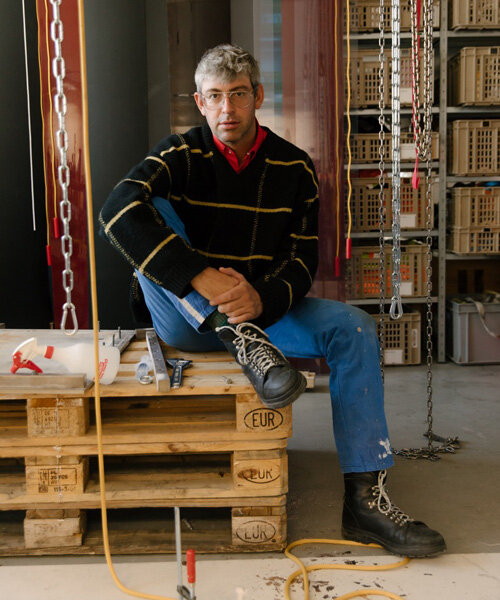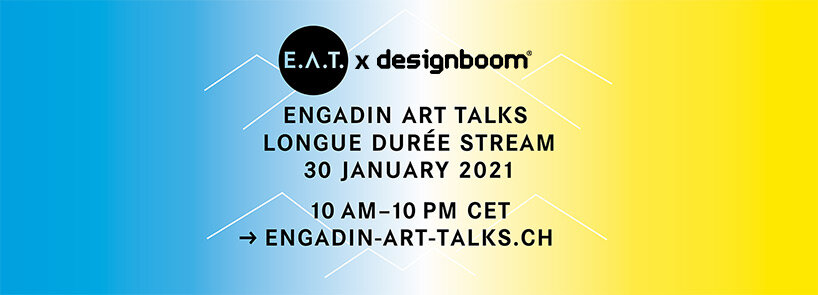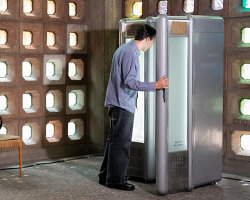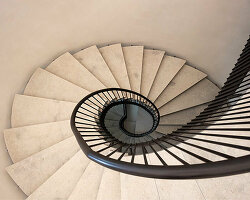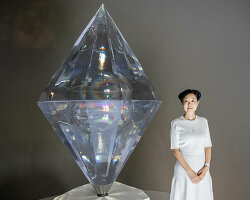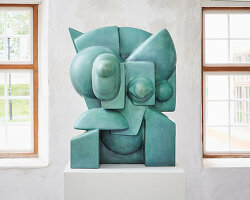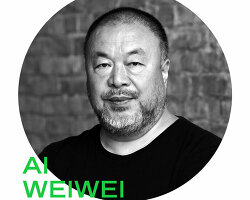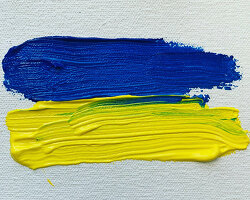the 11th edition of the renowned engadin art talks (E.A.T.) — the forum for art, architecture, design, film, science and literature — took place on saturday january 30, 2021. this year, E.A.T. was a virtual tour de force featuring a compelling lineup of international speakers tuning in from home. during the 12-hour-long stream, artists, architects, designers, writers and scientists shared their ideas, thoughts and projects around this year’s theme: ‘longue durée’. you can learn more about this year’s edition and find the full ‘longue durée’ program and list of speakers HERE, while you can watch the livestream HERE.
as a media partner of E.A.T. 2021, designboom brings you selected projects, interviews and news. before the event, we caught up with artist raphael hefti, who was the very first speaker on the program. watch his talk ‘salutary failures’ with E.A.T. curator bice curiger in the video below and read on for our interview with the artist.
raphael hefti in conversation with curator bice curiger at the engadin art talks 2021
designboom (DB): what is the focus of your E.A.T. talk, and what themes and topics do you intend to present?
raphael hefti (RH): the invitation from E.A.T. was—I guess—prompted by an exhibition that I held at the kunsthalle basel. the exhibition—and the book that we made with it—was called ‘salutary failures’, because I believe that progress sometimes happens when you break things. so the talk is a kind of walk-through, for the many people who wanted to see, but couldn’t see, the show, because of the lockdowns.
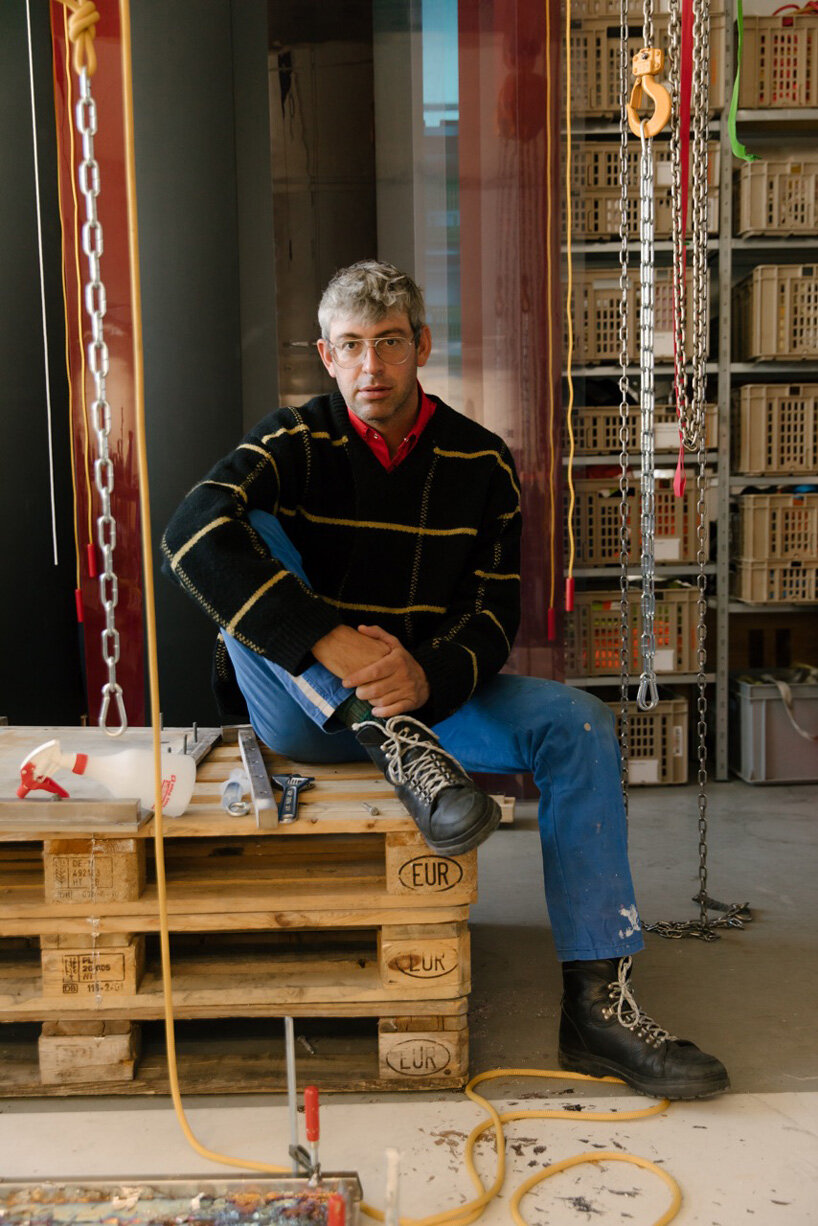 raphael hefti portrait
raphael hefti portrait
image by diana pfammatter
all works courtesy of the artist
RH (continues): the kunsthalle is a legendary institution in basel. it was the first exhibition space of its kind in switzerland, and it’s helped shape the importance of that city to the arts. I decided to give the institution as much as it could carry, quite literally. we trucked in a series of monoliths made of black casting sand, so heavy that if too many people entered the gallery at once, the floor might collapse. the sand came from factories, from places of production as important as the kunsthalle, but way less visible.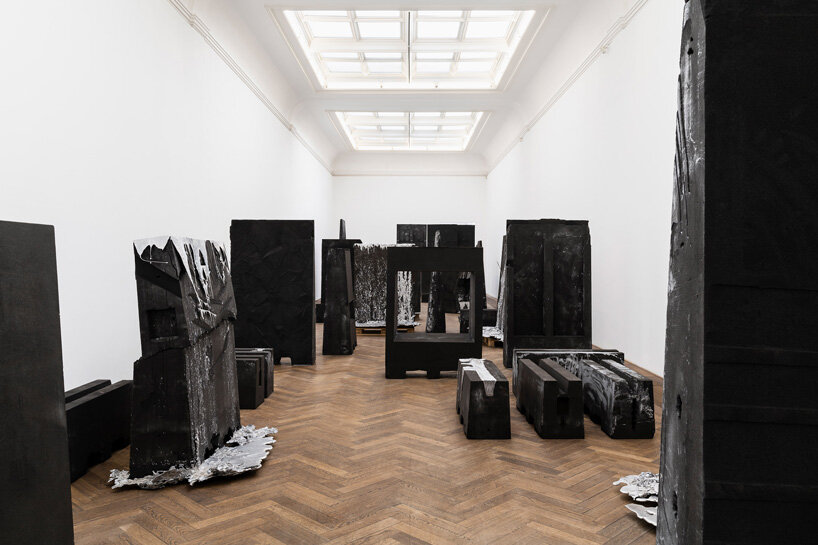
(also header image) raphael hefti, installation view, salutary failures, kunsthalle basel, 2020, ‘view on the sun is the tongue, the shadow is the language’, 2020 all exhibition photos: gunnar meier / kunsthalle basel
RH (continues): the exhibition was very much about time. the black sand that we brought into the kunsthalle—casting sand, it’s also called—is a protean material that is used for the industrial production of aluminum parts. you make a shape in the sand, for example, for a part of a diesel engine, and you pour in liquid metal at incredible heat. after the piece is made, the foundry recycles the sand, again and again. over time, and through repeated subjection to heat, dirt, and pressure, it grows blacker and blacker, until it acquires a kind of blackness that sucks all the light out of the room. the sand starts absorbing light like it has absorbed heat. the way the sand has been treated is both brutal, and measured, a technical process on which much of the world depends, without many of us ever having any insight into it, but it is also the material that gives birth to a lot of the familiar material world. a lot of the work I do is with the secret biographies that everyday objects have, the technical processes that bring them into existence.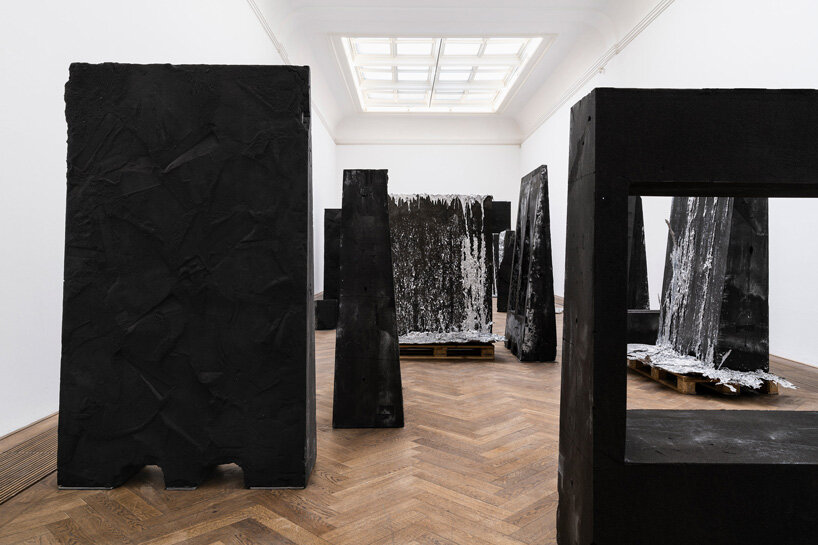 raphael hefti, installation view, salutary failures, kunsthalle basel, 2020, view on ‘the sun is the tongue, the shadow is the language’, 2020 (detail)
raphael hefti, installation view, salutary failures, kunsthalle basel, 2020, view on ‘the sun is the tongue, the shadow is the language’, 2020 (detail)
RH (continues): two rooms behind the black sand, I installed a couple of steel beams that had been subjected to an artificial aging process in a metallurgy lab in germany. the test process is used to determine how parts are likely to age under heat and stress. it’s the kind of thing that you want to know if you are designing an aircraft wing, for example. I managed to convince the lab to allow me to install a couple of high quality steel beams in the test forge, accompanying their other experiments for an impossibly long time, eight years—the equivalent of 5,000 years of ordinary time. you see what these steel beams would look like, if they were exposed to 5,000 years of sunrises and sunsets. and what happens in that time to the steel is devastating: it looks like a row of molars, like ancient teeth stubbornly set in a jawbone. the sense of tension and elasticity in the steel is gone. it’s like encountering a new kind of stone. and 5,000 years is nothing in geological time.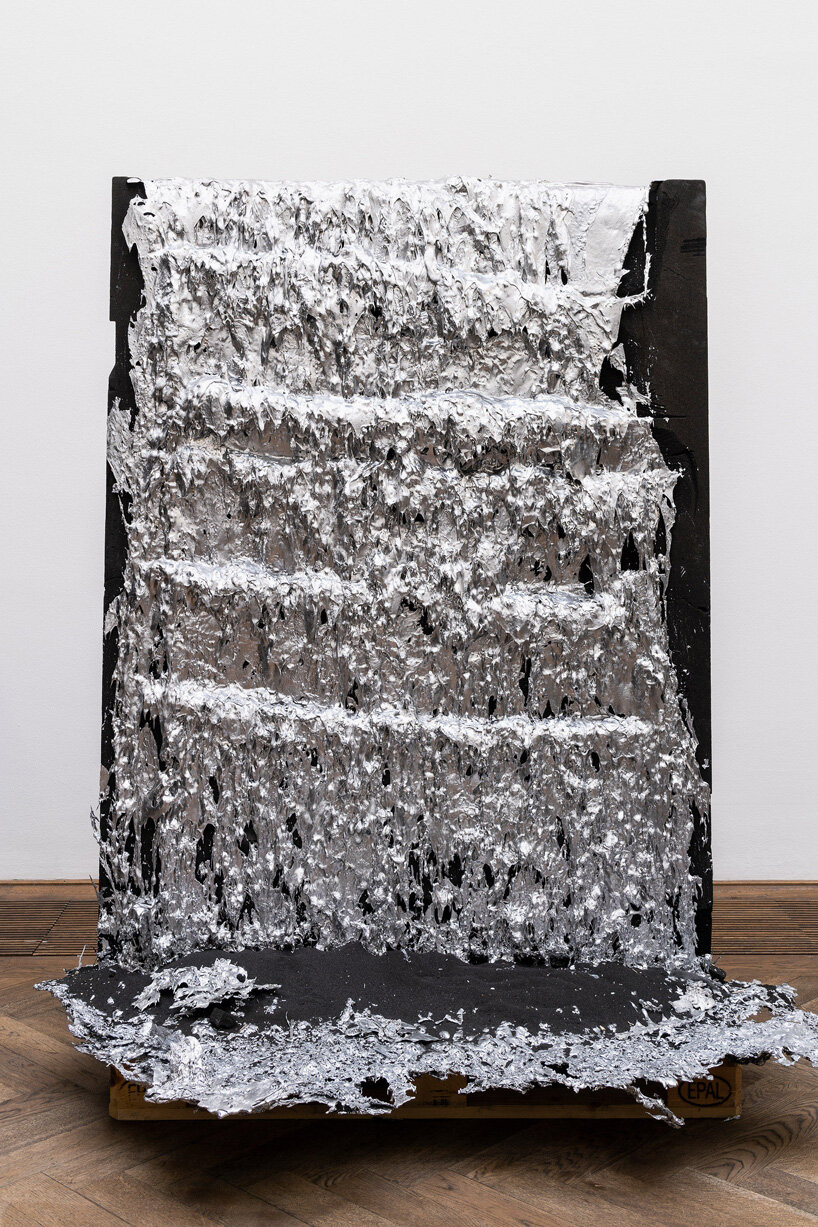 raphael hefti, installation view, salutary failures, kunsthalle basel, 2020, view on ‘the sun is the tongue, the shadow is the language’, 2020 (detail)
raphael hefti, installation view, salutary failures, kunsthalle basel, 2020, view on ‘the sun is the tongue, the shadow is the language’, 2020 (detail)
RH (continues): how do you convey a sense of an abyss of time opening up in front of you? that was something we wanted to offer. the last work, ‘message not sent’ (2020), involves a series of noble gases—helium, neon and so on—being tested in hand made glass vessels, like the tubes for neon lights but in widths and forms that no neon light has ever had. tendrils of electric light moved through the gas, which was being continuously stripped of its electrons by the current. the thing about the noble gases is, though that they are unbelievably stable. the only elements that do not, cannot form compounds, the noble gases can date their birth hour back to the big bang. from the time of a working life, to billions of years, time opens up like a jaw.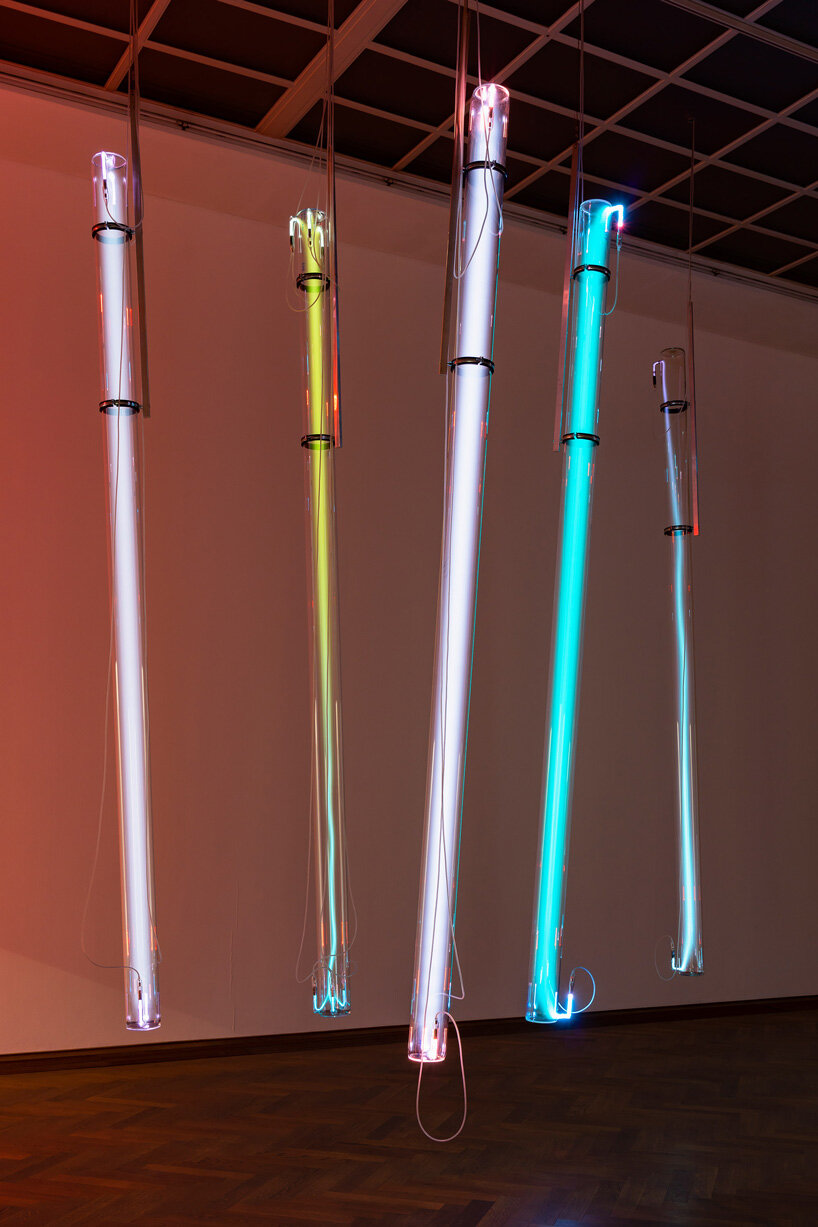 raphael hefti, installation view, salutary failures, kunsthalle basel, 2020, view on ‘message not sent’, 2020 (detail)
raphael hefti, installation view, salutary failures, kunsthalle basel, 2020, view on ‘message not sent’, 2020 (detail)
DB: where does your fascination with industrial and post-industrial processes come from?
RH: I work closely with engineers and technicians—I did an engineering degree before I became an artist—and for all the works, I closely examine industrial production processes and reproducible fabrication techniques. when I was an apprentice, I once had the assignment of making a hammer from a rod of steel. we had to file down the head of the hammer for a week, and then harden the steel, by heating it and tempering it. there’s a stage in the process, before the tempering is complete, when the steel of the hammer is as brittle as glass. I dropped the hammer-head, in the middle of making it, and it shattered. that simple moment was a discovery for me. the experience that a seemingly familiar material can transform itself into the exact opposite of what every single life experience has taught you to expect, opened up a new world for me. I was trying to achieve something, but the hammer had other ideas, and they were better.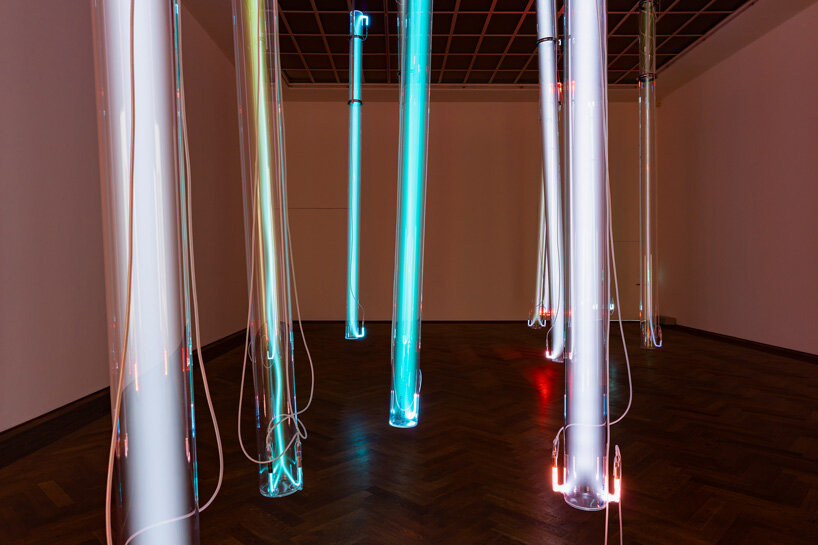 raphael hefti, installation view, salutary failures, kunsthalle basel, 2020, view on ‘message not sent’, 2020 (detail)
raphael hefti, installation view, salutary failures, kunsthalle basel, 2020, view on ‘message not sent’, 2020 (detail)
DB: how important is risk-taking and experimentation for an artist, and how does this contribute to your own artistic approach?
(RH): we poured our hearts into the book that accompanied the exhibition, that is coming out next month with lenz press. we have a huge archive of materials, from hundreds of visits to factories and ten years of experiments on materials, and elena filipovic really encouraged us to develop it into a guide not just to an exhibition, but as an almanac of our experiments. even the cover embodies that idea: the cover is hand screen printed from three color blends, so that every single cover is different, in a way that is both controlled and unpredictable.
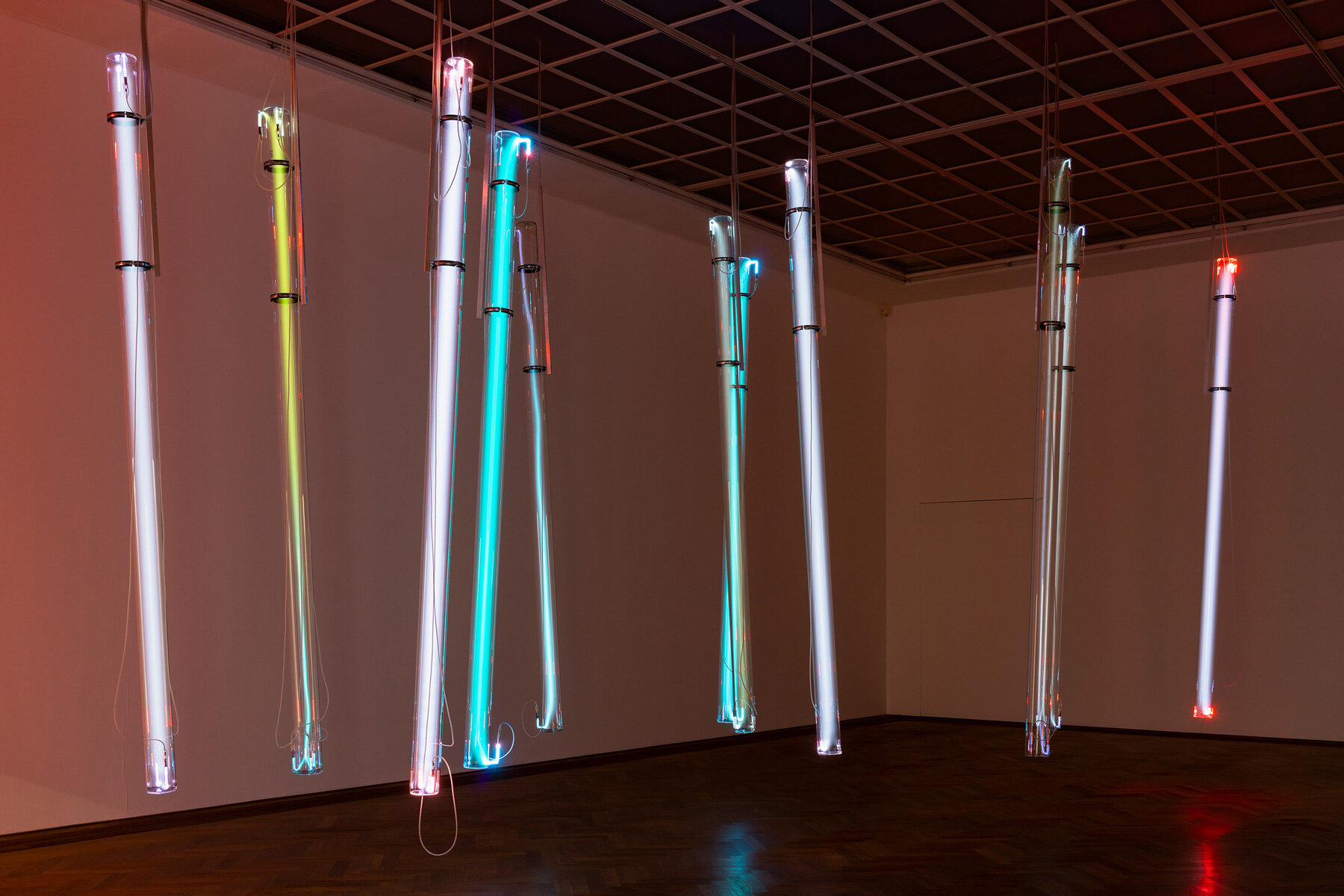
raphael hefti, installation view, salutary failures, kunsthalle basel, 2020, view on ‘message not sent’, 2020
DB: can you recall a breakthrough moment when you pushed a material or technique beyond its limits?
(RH): the world we live in is the product of incredibly refined processes of scaling and control. that is true of almost everything we handle, from a smartphone down to a wooden pencil. and these processes, that create the visual consistency of the world, usually operate invisibly, they are either behind closed doors or microscopically precise. but if you remove the constraints, and let material author itself, the results can be astonishingly beautiful. my process involves studying the chains by which such things are made, and breaking or looping those chains in order to reveal a potential that is usually carefully hidden. my techniques are sometimes the techniques used by material scientists in quality control, in maintaining the consistency of everyday life, but I put them at the service of experience, and of unpredictability. “salutary failures” is about pushing things to breaking point, because I want to reveal that invisible world, and make it possible for other people to make their own discoveries within it.
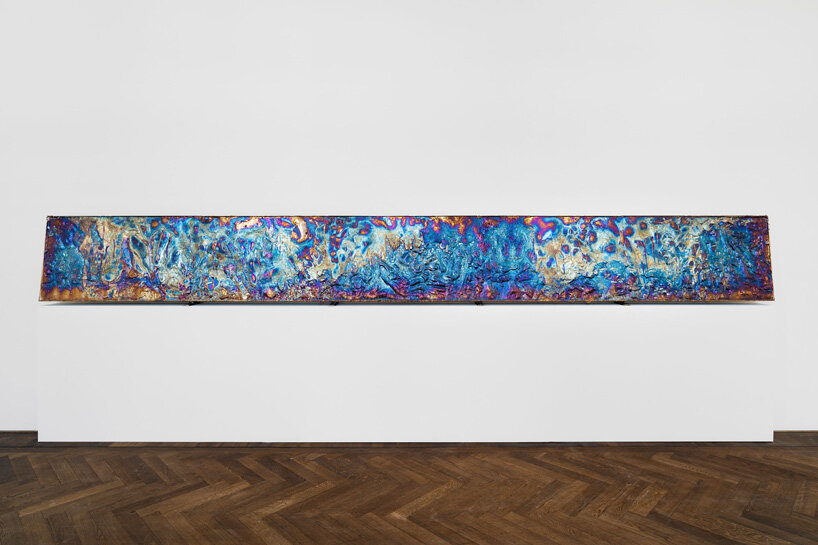 raphael hefti, installation view, salutary failures, kunsthalle basel, 2020, view on ‘polycrystalline horticulture’, 2020
raphael hefti, installation view, salutary failures, kunsthalle basel, 2020, view on ‘polycrystalline horticulture’, 2020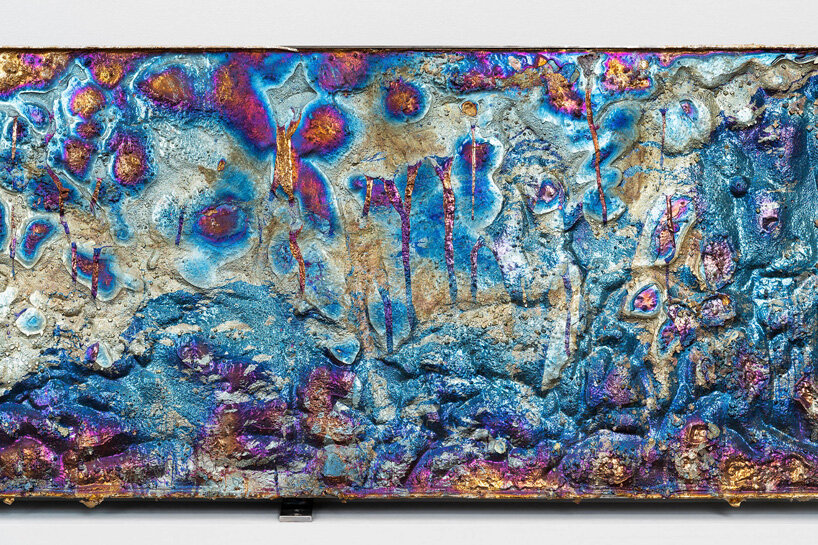 raphael hefti, installation view, salutary failures, kunsthalle basel, 2020, view on ‘polycrystalline horticulture’, 2020 (detail)
raphael hefti, installation view, salutary failures, kunsthalle basel, 2020, view on ‘polycrystalline horticulture’, 2020 (detail)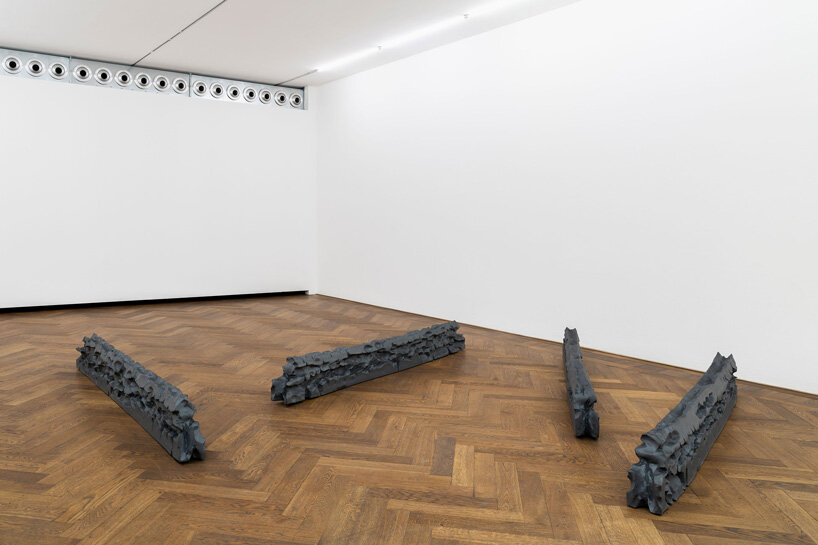 raphael hefti, installation view, salutary failures, kunsthalle basel, 2020, view on ‘dr. sattler: so, what are you thinking? dr. grant: we’re out of a job. dr. malcom: don’t you mean extinct?’, 2020
raphael hefti, installation view, salutary failures, kunsthalle basel, 2020, view on ‘dr. sattler: so, what are you thinking? dr. grant: we’re out of a job. dr. malcom: don’t you mean extinct?’, 2020
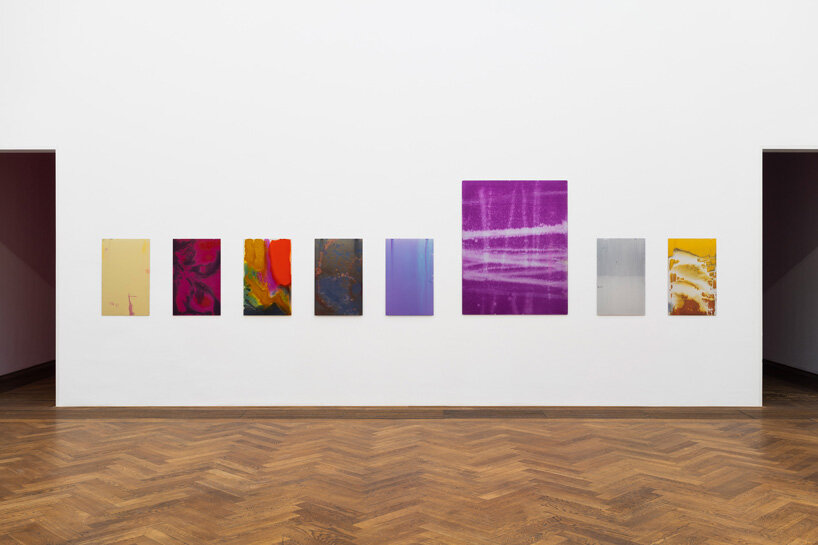 raphael hefti, installation view, salutary failures, kunsthalle basel, 2020, view on ‘(F. L. T. R.) RHE 9519; RHE 9520; RHE 9521; RHE 9526; RHE 9527; RHE 9530; RHE 9525; RHE 9506’, all 2020
raphael hefti, installation view, salutary failures, kunsthalle basel, 2020, view on ‘(F. L. T. R.) RHE 9519; RHE 9520; RHE 9521; RHE 9526; RHE 9527; RHE 9530; RHE 9525; RHE 9506’, all 2020
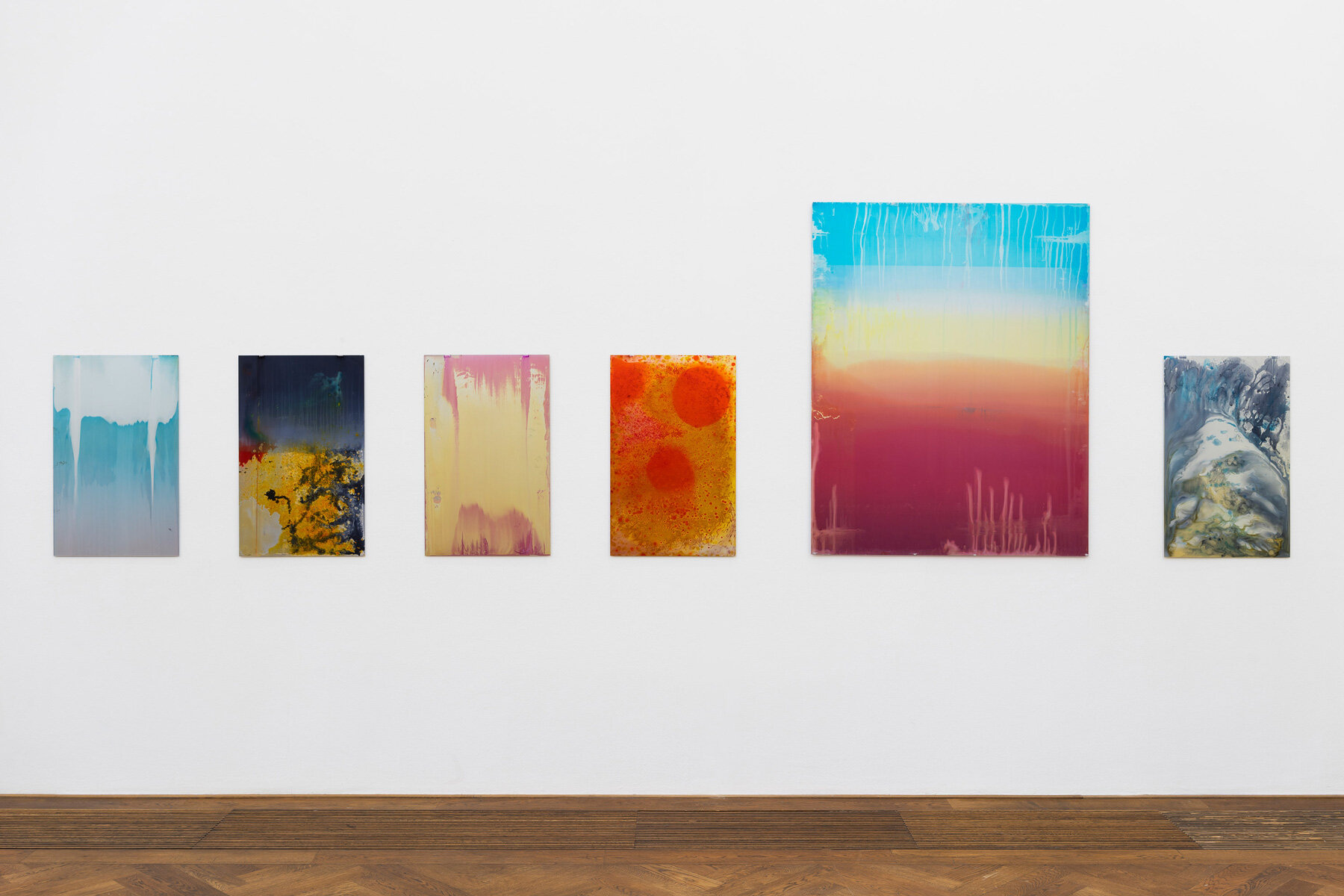
raphael hefti, installation view, salutary failures, kunsthalle basel, 2020, view on ‘(F. L. T. R.) RHE 9512; RHE 9513; RHE 9514; RHE 9515; RHE 9516; RHE 9502’, all 2020
E.A.T. is internationally recognized for bringing together leading artists, architects, writers, scientists and disruptive thinkers from around the world. its mission is to provide an interdisciplinary platform for a global dialogue on the arts and different creative fields. internationally recognized for its line-up of leading artists, architects, writers, scientists, and disruptive minds from all over the world, E.A.T. has invited so far more than 140 speakers that have presented their ideas and visions on challenging social relevant themes since its inception in 2010. E.A.T. was founded by cristina bechtler together with hans ulrich obrist.
art interviews (138)
engadin art talks (E.A.T.) (23)
PRODUCT LIBRARY
a diverse digital database that acts as a valuable guide in gaining insight and information about a product directly from the manufacturer, and serves as a rich reference point in developing a project or scheme.
